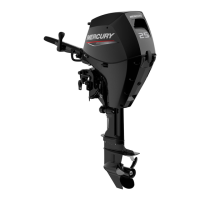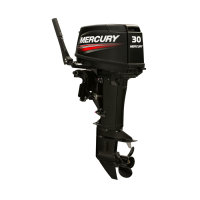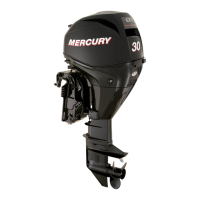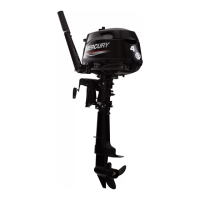MAINTENANCE
52
Steering Link Rod Fasteners
IMPORTANT: The steering link rod that connects the steering cable to the engine must be fastened using special
washer head bolt ("e" - Part Number 10-856680) and self-locking nylon insert locknuts ("b" & "d" - Part Number
11-826709113). These locknuts must never be replaced with common nuts (non-locking) as they will work loose
and vibrate off, freeing the link rod to disengage.
WARNING
Disengagement of a steering link rod can result in the boat taking a full, sudden, sharp turn. This potentially
violent action can cause occupants to be thrown overboard exposing them to serious injury or death.
a - Spacer (12-71970)
b - Nylon insert locknut (11-826709113)
c - Flat washer (2)
d - Nylon insert locknut (11-826709113) (tighten until seats then back off 1/4 turn)
e - Special washer head bolt (10-856680)
Description Nm lb. in. lb. ft.
Special washer head bolt 27 20
Nylon insert locknut "b" 27 20
Nylon insert locknut "d" Tighten intul seats, then back off 1/4 turn
Assemble steering link rod to steering cable with two flat washers and nylon insert locknut. Tighten locknut until it
seats, then back nut off 1/4 turn.
Assemble steering link rod to engine with special washer head bolt, locknut and spacer. First torque bolt, then
torque locknut to specifications.
Corrosion Control Anode
Your outboard has corrosion control anodes at different locations. An anode helps protect the outboard against
galvanic corrosion by sacrificing its metal to be slowly corroded instead of the outboard metals.
Each anode requires periodic inspection, especially in salt water which will accelerate the erosion. To maintain
this corrosion protection, always replace the anode before it is completely eroded. Never paint or apply a protective
coating on the anode as this will reduce effectiveness of the anode.

